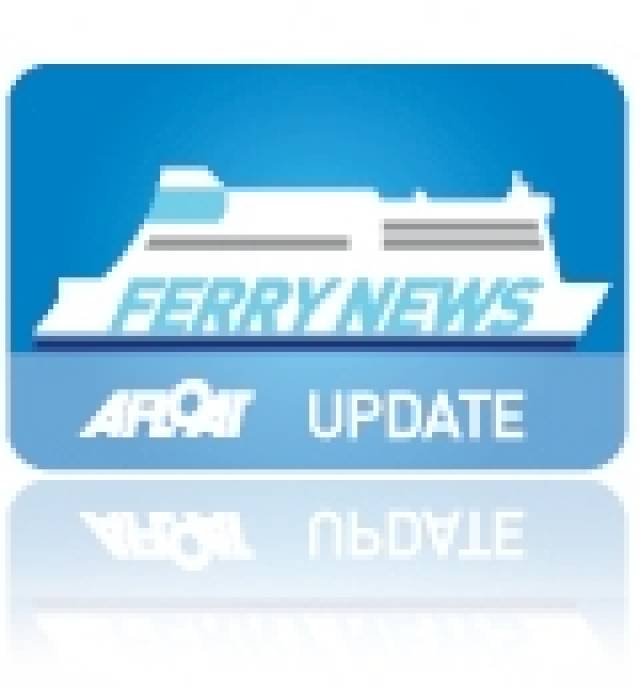#P&Oferries – Lysblink Seaways under repair in Greenock, Scotland as previously reported on Afloat, is where by coincidence DFDS Seaways operate a container service to Liverpool and from where they have chartered a freight-ferry to P&O Ferries, writes Jehan Ashmore.
Firstly is the charter by DFDS Logistics Rederi AS of Lysblink Seaways to Sea-Cargo based in Bergen.
The starboard side-loading paper products carrier was due to have called to Skogn, in Norway last month from Belfast but instead the 129m long vessel went aground on the west Scottish coast.
She was re-floated and towed to the Clyde where she entered Garvel Clyde's James Watt Dock at Inchgreen.
While on the Irish Sea, the freight-only Anglia Seaways charter from DFDS to serve P&O Ferries Dublin-Liverpool route had only begun earlier this week having called to Merseyside last weekend from The Netherlands.
Anglia Seaways is covering the roster of P&O's ro-pax Norbank which is in dry dock at Cammell Laird, Birkenhead. Also maintaining the Ireland-England central Irish Sea route is sister Norbay and larger ro-pax European Endeavour which also carries motorist cars and freight vehicles.
The Danish flagged 120-trailer Anglia Seaways is otherwise understood to normally operate on the North Sea, running Rotterdam-Immingham on the UK's east coast. It is from Anglia where she originally began a career with Norfolkline (a Maersk subsidiary) but running from Felixstowe firstly as the Maersk Anglia.
It's almost full circle with Anglia Seaways presence on the Irish Sea, as she has served on several routes, the most recent a charter to Seatruck Ferries on the Warrenpoint-Heysham route until last year.
More apt was the role she played for DFDS Seaways when the Danish shipping giant's acquisition of Norfolkline Irish Sea operations in 2010.
The involved a network of routes that would be later sold to Stena Line, except for the Dublin-Birkenhead service in which Anglia Seaways served until January 2011.
This marked the final trace of the short-lived DFDS freight and 'passenger' operations that Stena would eventually swallow up to further consolidate as the dominant player on the Irish Sea.
For a more in-depth coverage of this period in the Irish Sea ferry industry (including a photo of Anglia Seaways) while still sporting the distinctive pale blue corporate Maersk hull colour.
Also seen at Dublin Port was the ro-pax Liverpool Seaways, which would head off for a career with DFDS on the Baltic Sea.
































































